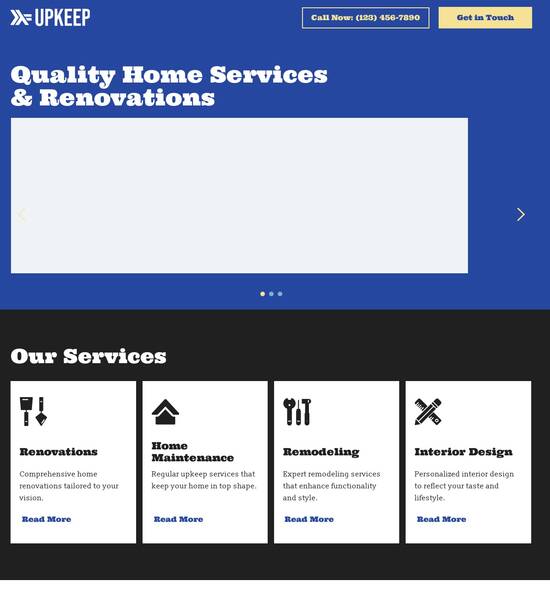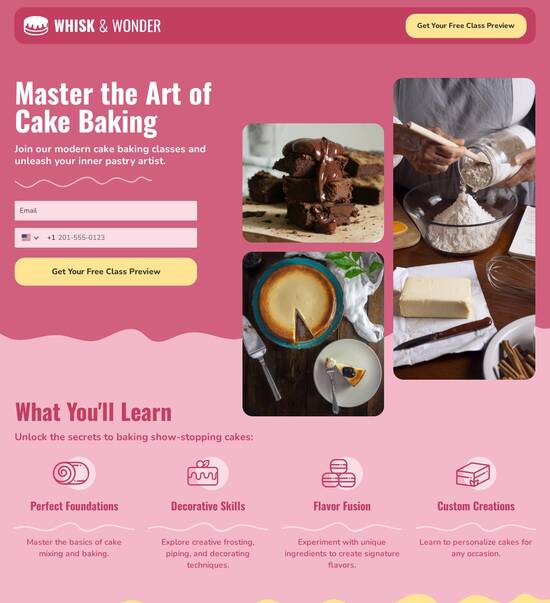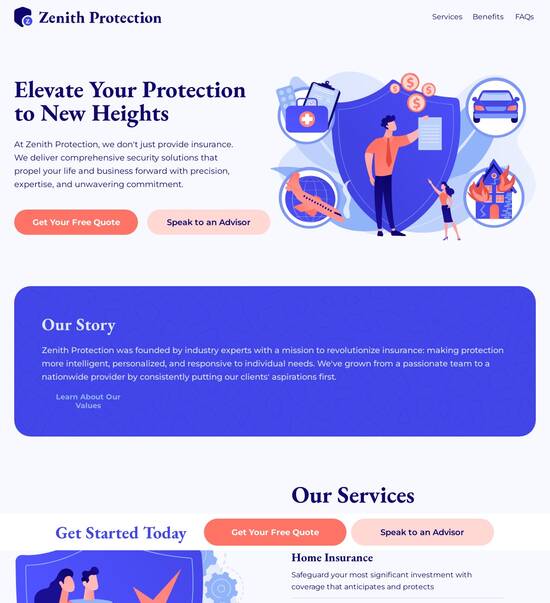
HTML page template for black friday stores
Use TemplateAbout template
Showcase your products with stunning landing page templates for your black friday stores. Ready to boost those sales?
Recommended templates

Easy to build without coding
With the intuitive drag-and-drop builder, anyone on your team can create high-converting pages without any knowledge of code or design. Make enhancements to your landing page with custom widgets using Javascript, HTML/CSS, or third-party scripts.

Multiple layouts for any industry and goal
Select from 500+ landing page layouts built to boost conversions across industry-specific scenarios. Customize them by adjusting fonts, adding images, and generating on-brand content with the AI assistant. Quickly scale with Instablocks® and Global Blocks that you can save, reuse, and update globally.

Loads fast and looks polished on any device
Every template is responsive, which means they present professionally on any device and load blazingly fast with our Thor Render Engine. You can also power them up with Google AMP technology to deliver an unparalleled mobile experience and drive higher conversions.

Robust analytics & experimentation
Get real-time updates and reporting across all your devices, showing the number of visitors, conversions, cost-per-visitor, and cost-per-lead. Launch AI-powered experiments, run A/B tests, and use heatmaps to analyze user behavior, then optimize your landing page to maximize conversions.







Easy to build without coding
With the intuitive drag-and-drop builder, anyone on your team can create high-converting pages without any knowledge of code or design. Make enhancements to your landing page with custom widgets using Javascript, HTML/CSS, or third-party scripts.
Multiple layouts for any industry and goal
Select from 500+ landing page layouts built to boost conversions across industry-specific scenarios. Customize them by adjusting fonts, adding images, and generating on-brand content with the AI assistant. Quickly scale with Instablocks® and Global Blocks that you can save, reuse, and update globally.
Loads fast and looks polished on any device
Every template is responsive, which means they present professionally on any device and load blazingly fast with our Thor Render Engine.
Robust analytics & experimentation
Get real-time updates and reporting across all your devices, showing the number of visitors, conversions, cost-per-visitor, and cost-per-lead. Launch AI-powered experiments, run A/B tests, and use heatmaps to analyze user behavior, then optimize your landing page to maximize conversions.
All the features you need to build lead-generating landing pages
Explore more featuresLearn how to build top-performing landing pages for any goal
FAQs
Leading the way in building high-performing landing pages





Maximizing your ROI with Instapage's powerful landing page platform
In the competitive landscape of digital marketing, leveraging effective landing page templates is critical. Instapage offers a robust platform uniquely designed to empower marketers to create, optimize, and scale high-converting landing pages that boost ROI. With its user-friendly features and extensive library, Instapage improves campaign execution regardless of your team's size or budget.
Understanding the benefits of landing pages
Landing pages play a pivotal role in capturing leads and driving conversions. Instapage's landing page templates are optimized for high performance, ensuring your marketing strategies are effective and measurable. Here’s why they stand out:
- High-converting templates: Choose from over 100+ expertly designed layouts that cater to various industries, ensuring your message resonates with your specific audience.
- User-friendly interface: The intuitive drag-and-drop builder enables users to create stunning pages without any coding, speeding up the production process.
- Real-time collaboration: Teams can collaborate seamlessly, providing instant feedback and enabling quick iterations, which is essential in fast-paced marketing environments.
Creating your landing page step-by-step
Building effective landing pages involves a structured approach that taps into Instapage's full potential. Here’s a breakdown of the process:
- Select a template: Browse through the extensive library of templates that align with your campaign goals.
- Customize your content: Utilize dynamic text replacement to personalize messages for distinct audience segments, boosting engagement.
- Implement A/B testing: Use built-in experimentation features to test variations of landing pages, enabling data-driven optimizations that elevate performance.
Optimizing performance with data analysis
Once your landing pages are live, continuous optimization is crucial. Here are steps to ensure your pages perform at their best:
- Utilize heatmaps: Analyze user behavior on your landing page to identify areas of improvement.
- Monitor metrics: Leverage Instapage's analytics dashboard to assess performance based on defined KPIs.
- Regularly update content: Refresh landing page content based on user feedback and market trends to maintain relevance and improve conversions.
In summary, the combination of a structured approach and powerful tools makes Instapage an outstanding choice for creating effective landing pages. Apply these strategies to enhance your digital campaigns.
Ready to supercharge your marketing efforts? Explore Instapage today and discover how our platform can transform your landing pages and drive performance.
Creating the ultimate HTML page template for Black Friday stores
Understanding the significance of Black Friday in the retail calendar
Black Friday has become synonymous with massive retail sales, marking the unofficial start of the holiday shopping season. Originally stemming from the post-Thanksgiving sales in the United States, this day is now a global phenomenon where retailers offer substantial discounts to attract shoppers. Understanding its historical context is crucial; growing up from a single-day event to an entire shopping weekend, its impact on consumer behavior cannot be overstated.
Statistically, Black Friday continues to show promising sales trends, which emphasize the importance of optimization. A significant surge in online shopping has transformed how businesses operate during this period. Therefore, investing in an effective online presence boosts visibility and ensures that your Black Friday page converts visitors into buyers.
Considering that a substantial portion of holiday shopping occurs online, having a robust digital presence is invaluable. Business owners must prioritize their HTML page templates to create optimized, user-friendly experiences that cater to the needs of tech-savvy consumers looking for the best deals online.
Essential components of an effective HTML page template
To attract online shoppers during Black Friday, the HTML page template must incorporate essential elements. Eye-catching visuals are paramount; vibrant, high-resolution images that showcase products can effectively draw users' attention. The choice of color schemes also plays a crucial role—dark themes can provide a sleek look, while bright accents can highlight special offers and discounts.
Next, engaging content is critical for capturing and retaining visitor interest. Crafting compelling headlines that emphasize value and urgency can significantly drive action. Using phrases that create time-sensitivity, like ‘limited stock’ or ‘while supplies last,’ can spur consumers into making quicker purchasing decisions.
Technical underpinnings: Building a robust HTML template
The success of an HTML page template lies in its technical structure and user experience. Implementing layout choices such as Flexbox or grid systems can enhance the organization of content, making it easier for users to navigate. An equally vital aspect is mobile responsiveness, as a growing number of users shop directly from their mobile devices. Thus, the template should seamlessly adapt to various screen sizes.
Accessibility is another critical part of building an inclusive template. Using semantic HTML not only boosts SEO but also improves the usability for all users, including those with disabilities. ARIA roles can further enhance accessibility, ensuring that screen readers interpret your content correctly, allowing everyone to shop without barriers.
Leveraging JavaScript: Enhancing user interactivity
JavaScript plays a vital role in creating engaging user experiences on HTML pages. Understanding the Document Object Model (DOM) is critical for manipulating web content effectively. Implementing features like `document.addEventListener` can add interactivity, such as click events for buttons or forms, making the shopping experience smoother and more dynamic.
For instance, creating time-based offers can trigger automatic pop-ups that inform users about price drops. Best practices dictate organizing scripts for better maintainability across all pages, allowing you to easily update offers and functionalities without restructuring the entire code base.
Dynamic element updates on page load can significantly improve user engagement. By loading promotional banners or countdowns via event listeners, you create a sense of urgency, encouraging customers to act before time runs out.
DOMContentLoaded: The key to optimized load times
Understanding the concept of DOMContentLoaded is essential for optimizing load times and improving user experience. This event signifies that the HTML document has been completely loaded and parsed, with scripts executable. Utilizing this event allows marketers to ensure critical content is presented promptly, providing a seamless shopping experience.
Effective performance strategies include prioritizing critical content display, focusing on elements that are above the fold, and deferring non-essential scripts until after the main content is loaded. This approach not only enhances user satisfaction but also contributes positively to SEO rankings.
Measuring these performance improvements can be done through various tools and techniques, enabling on-the-fly adjustments to boost efficiency continually. Regular reviews of page speed and load times help maintain optimal performance, especially crucial during high traffic events like Black Friday.
Designing for conversion: Crafting irresistible offers
The design of your HTML page template should align with your conversion goals; this means crafting persuasive calls to action that encourage users to make purchases. Color psychology indicates that certain button colors and shapes can significantly affect user behavior. For example, using contrasting colors for 'Buy Now' buttons ensures they stand out against the page background.
Placement strategies are equally important. Ensuring action buttons are located above the fold allows users immediate access without unnecessary scrolling. Scarcity and urgency can further drive sales, and implementing countdown timers can effectively communicate limited time offers, enhancing the urgency of user action.
Integrating tools for email collection and user engagement
Building a customer database is a vital part of your marketing strategy, especially during Black Friday. Integrating email collection tools into your HTML template can help. Modal pop-ups can be an effective method for collecting leads if timed correctly, such as when a user is about to exit the page. However, it’s essential to balance engagement with user experience; aggressive pop-ups can deter potential customers.
Additionally, ensuring GDPR compliance when collecting personal information is crucial. Once leads are collected, email follow-ups can establish a lifecycle campaign to maintain engagement even after Black Friday ends. Personalized messages can turn one-time customers into loyal shoppers, which is vital for ongoing business success.
Ensuring seamless payment and checkout experience
A seamless payment and checkout process is paramount for converting shoppers into buyers, particularly during Black Friday when traffic and sales volume peak. Providing multiple payment options is one way to cater to diverse consumer preferences, ranging from credit cards to digital wallets. Displaying security badges not only builds user trust but assures customers that their transactions are safe, fostering confidence in your brand.
Streamlining the checkout process involves minimizing the number of fields users must fill out. This practice improves the user experience and speeds up the purchasing journey. Utilizing auto-filled information through local storage and cookies can further reduce friction, allowing shoppers to complete their purchases quickly and effortlessly.
A/B testing for continuous improvement
A/B testing is a crucial element of optimizing your Black Friday HTML page template. By defining key success metrics such as conversion rates and customer engagement levels, marketers can determine what aspects of their page resonate most with visitors. Setting up various A/B tests allows you to experiment with different headlines, visual elements, and offers to identify which variations result in higher performance.
For instance, testing two versions of a landing page can yield insights on user behavior regarding layout or color schemes. Analyzing the results becomes pivotal; understanding what works versus what doesn’t can lead to actionable strategies for future campaigns. Implementing feedback loops ensures that insights drawn from these tests inform subsequent updates and improvements, creating a cycle of continuous enhancement.
Analyzing performance post-event: What next?
After the whirlwind of Black Friday, it’s time to analyze performance metrics critically. Tracking sales conversion rates allows you to understand the event's financial impact while evaluating user engagement metrics such as bounce rates and time on page provides insights into the customer experience. These statistics can guide strategic adjustments for future events.
Additionally, conducting surveys can directly capture user feedback, giving a clearer picture of what worked and what didn’t. Keeping an eye on trends post-event is equally important as it prepares your business for upcoming sales events, ensuring your marketing strategies remain relevant and compelling.
Future-proofing your Black Friday template
To maintain competitiveness, it’s crucial to regularly update your HTML page template to meet the evolving trends in e-commerce. Staying ahead of technology changes, particularly in JavaScript, ensures you're not left behind as user experiences continue to evolve. Adapting your template for future sales events beyond Black Friday can also cement customer expectations for high-quality, seamless shopping experiences.
Investing effort into continuously enhancing your landing page design and functionality pays dividends in terms of brand trust and customer loyalty. By preparing now for the sales events of tomorrow, you position your business as a frontrunner in the ever-competitive retail landscape.
Summary
The significance of a personalized and functionally efficient HTML page template for Black Friday cannot be overstated. As we've explored, each aspect from design to technical foundations plays a pivotal role in delivering an optimal shopping experience. Continuous improvement following data insights and user feedback is vital, ensuring that your template remains relevant and effective.
Ultimately, investing in a professional, optimized online presence for seasonal sales like Black Friday enables retailers to maximize their reach and conversion potential, allowing them to navigate this prolific shopping season successfully.
Ready to skyrocket conversions?
Supercharge your ad campaigns with high-performing landing pages
Get started














